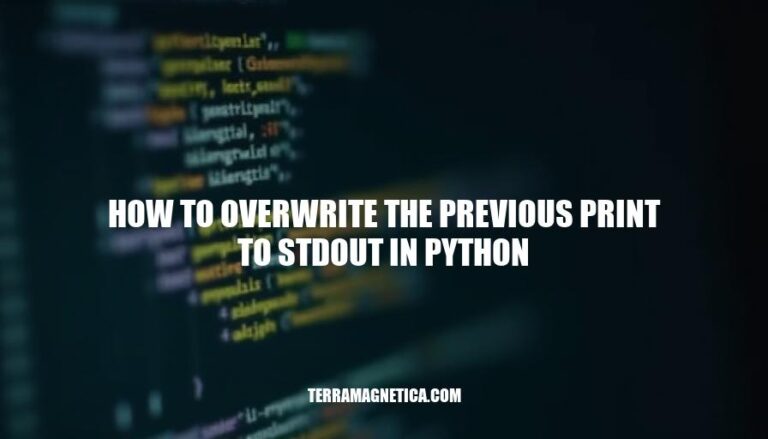


Overwriting the previous print to stdout in Python is a technique that allows you to update the output on the same line, rather than printing new lines each time. This is typically achieved using the carriage return character (\r) in the print function. For example, print("text", end="\r") moves the cursor back to the start of the line, enabling the next print to overwrite the previous one.
This technique is particularly important for creating dynamic and real-time outputs, such as progress bars, status updates, or live data feeds. It enhances the user experience by providing a cleaner and more interactive display.
Would you like to see a simple code example of this in action?
In Python, the carriage return character (\r) moves the cursor to the beginning of the current line without advancing to the next line. This allows you to overwrite the existing text on the same line. For example:
import time
for i in range(10):
print(f"Count: {i}", end='\r')
time.sleep(1)
In this code, \r ensures that each new “Count: {i}” overwrites the previous one, creating a dynamic display.
Here’s a simple example of how to overwrite the previous print to stdout in Python using the carriage return character (\r):
import time
for i in range(10):
print(f"Count: {i}", end='\r')
time.sleep(1)
This code will print the count from 0 to 9, overwriting the previous count on the same line each second.
\r)import time
for i in range(10):
print(f"Count: {i}", end='\r')
time.sleep(1)
import time
for i in range(10):
print(f"\033[2KCount: {i}", end='\r')
time.sleep(1)
sys.stdout.write and sys.stdout.flushimport sys
import time
for i in range(10):
sys.stdout.write(f"\rCount: {i}")
sys.stdout.flush()
time.sleep(1)
import time
for i in range(10):
print(f"Count: {i}", end='\r')
time.sleep(1)
print("\033[2K", end='') # Clear the line
contextlib.redirect_stdoutimport io
import contextlib
f = io.StringIO()
with contextlib.redirect_stdout(f):
for i in range(10):
print(f"Count: {i}", end='\r')
time.sleep(1)
print(f.getvalue())
These methods provide various ways to overwrite the previous print to stdout in Python.
Common Issues:
Solutions & Best Practices:
import time
for i in range(10):
print(f'\r{i}', end='', flush=True)
time.sleep(1)
Use \r to return to the start of the line and flush=True to ensure immediate output.
ANSI Escape Sequences:
import time
for i in range(10):
print(f'\033[2K\r{i}', end='', flush=True)
time.sleep(1)
\033[2K clears the line before printing new content.
Consistent Output Length:
import time
for i in range(10):
print(f'\r{i:02}', end='', flush=True)
time.sleep(1)
Format output to maintain consistent length, avoiding leftover characters.
Disable Buffering:
import sys
sys.stdout.reconfigure(line_buffering=True)
Ensure immediate output by configuring stdout to line-buffered mode.
These practices help maintain clean and consistent output when overwriting previous prints to stdout.
Overwriting previous prints to stdout is crucial for creating interactive and dynamic output in various applications, such as progress bars, countdown timers, and real-time updates.
To achieve this, you can use techniques like clearing the line before printing new content, utilizing ANSI escape sequences, maintaining consistent output length, and disabling buffering.
By implementing these methods, you can ensure clean and immediate output, making your Python programs more engaging and user-friendly.